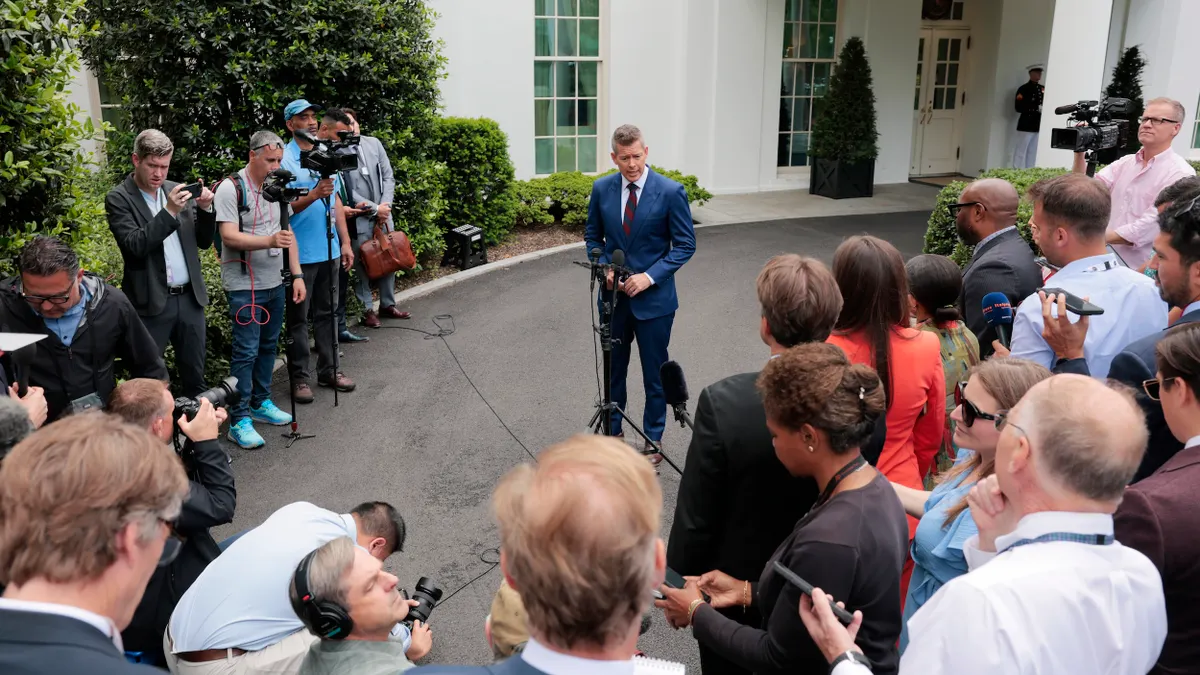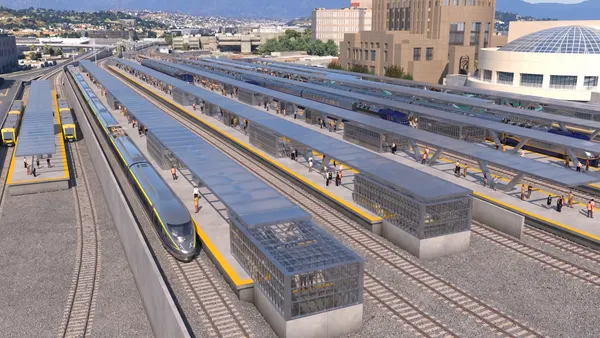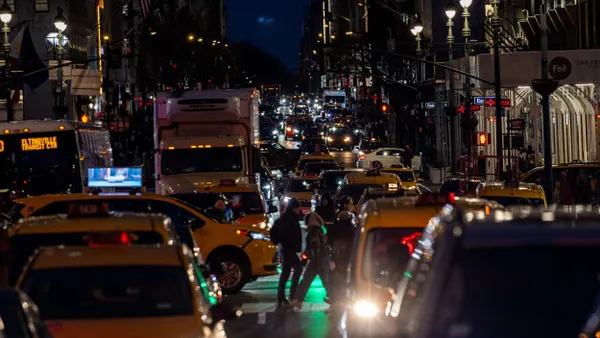Editor's Note: This piece was written by Kurtis McBride, CEO of Miovision. The opinions represented in this piece are independent of Smart Cities Dive's views.
For most municipalities, the option of spending millions upon millions of dollars on new technology to become a smart city is a non-starter. Budgets are always tight, and without a clear and timely benefit to taxpayers, writing a big check is a good way to get voted out of office.
Taking an expensive top-down smart city approach simply isn’t feasible for all but the biggest, wealthiest cities. The more practical – and more effective – route to making your city smart is to start with one foundational project and build upon it.
Street lights are a popular choice. Connected sensors on street lights can help improve efficiency and security. When there’s no movement, the lights stay off to save electricity. When people are near, they turn on. When bulbs burn out, the public works department is alerted to change them. The problem with street lights is that they have limited impact on citizens.
There’s a better alternative: the intersection. A connected traffic intersection not only creates a powerful foundation to build upon, but also provides immediate and positive citizen impact. An efficient intersection helps ensure a timely commute for drivers, a faster response time for emergency responders, and safer streets for everyone. And, the spread out nature of an intersection provides connection points that other smart city technology can connect to. By starting with intersections, cities can make huge strides while setting themselves up for a long-term smart city strategy. The benefits of connected intersections simply outshine those of street lights.
What do connected traffic lights have to do with traffic flow? Instead of timing them every three years, traffic engineers can monitor traffic flow and change timing of signals as needed – remotely and instantly. You can optimize traffic flow while providing priority signal timing for emergency vehicles. For instance, connected traffic signals are smart enough to know when to give priority for mass transportation and even cyclists. They can help emergency workers get to the scene faster by giving them green lights along the way. With connected intersections, traffic moves more efficiently and signal issues are resolved in hours, not days. What results is a more reliable commute, and happier citizens who can more accurately predict how long their drive will take before they ever hit the road.
These are just a few examples of the immediate benefits of connected intersections, which make cities smarter on day one. The real potential of a network based on intersections is realized as sensors and applications are eventually added to the network. With cameras and traffic sensors connected, cities can collect vast amounts of data on traffic patterns to drastically improve the traffic and safety. Plus secure, open technology provides the foundation for the private sector to build new applications that further improve quality of life for residents.
By becoming "smart" one intersection at a time, cities can resolve immediate traffic pains while building a long-term smart city network that can be the foundation for future innovation. That incremental approach is more accessible, affordable, and practical for the vast majority of cities around the world.









